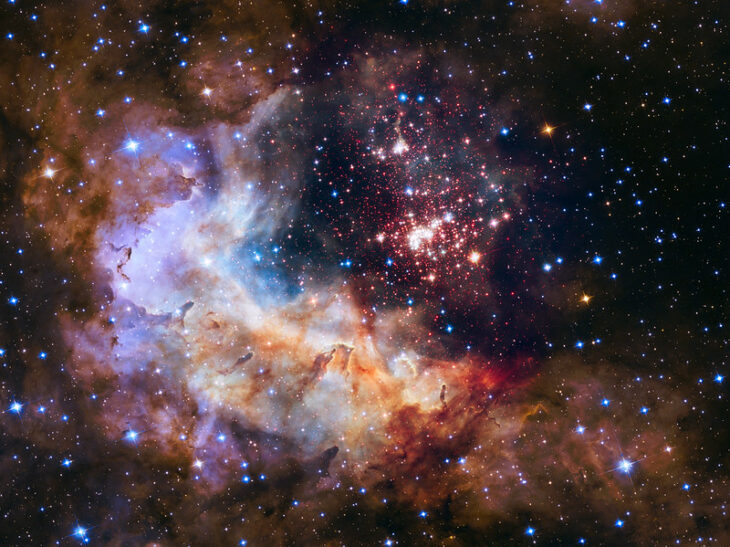The universe has not always been like it is today. Investigating the differences between the cosmos we see today and what it looked like towards its origin, almost 14 billion years ago, is a major area of study for astrophysicists and cosmologists. They refer to the first billion years after the Big Bang, during which the first stars and galaxies formed, as cosmic dawn. This was when objects in the universe first shone on their own rather than just existing in the afterglow of the Big Bang, and when nuclear fusion in stars started to create elements heavier than helium.
A team of scientists recently investigated what clusters of stars would look like at cosmic dawn through computer simulations. They aimed to produce patterns of star formation and galaxy formation that could be verified with new findings from JWST. Doing so would help astronomers better understand how galaxies in the early universe formed, in particular, the roles of the still-mysterious dark matter and the first stars to emerge from cosmic dust.
The scientists used the cosmological simulation code AREPO to recreate cosmic dawn as a single 3-dimensional box with each side 1.9 megaparsecs long – that’s 60 quintillion kilometers or 40 quintillion miles. Inside this box, they added 450 million particles representing the early elemental material of the universe, including hydrogen, helium, and a variety of their isotopes, ions, and molecules that form together. They also included particles to simulate what we know about dark matter, which is affected by gravity but doesn’t interact with any other forces. When a collection of these particles clumps together and exceeds a certain threshold of mass, known as the Jeans mass, the code reports that they have formed a star.
The team wanted to find where the simulated stars and other particles formed structures, like clusters of stars, galaxies, or clusters of galaxies. So, they implemented a procedure to group simulated particles that were close enough to be considered linked, known as a friends-of-friends algorithm. By running multiple friends-of-friends algorithms on their simulated universe, some looking for dark matter patterns and others looking for regular matter, like stars, dust, and gas, they hoped to see what shapes material in the early universe would take.
Overall, they found that their simulated star clusters were of comparable size to real clusters that astronomers have observed from the early universe, though no real clusters have been observed with stars as metal-poor as theirs. The number of stars visible in the simulated star clusters also aligned with early observations of distant star clusters made with JWST. Many of the star clusters the team simulated were unstable, meaning they were not yet fully bound together by their own internal gravity. Additionally, they found that stable star clusters became unstable again when they started grouping into larger structures like galaxies.
However, the team did make one unexpected discovery. The friends-of-friends algorithms, which check for objects like star clusters and galaxies, yielded different results when examining dark matter versus regular matter. They found that the variation between them was as much as 50%. That is, the dark matter-focused algorithms sometimes counted only half the number of objects that the regular matter-focused ones counted. This discrepancy also depended on the mass of the star clusters or galaxies being identified. It was particularly pronounced for objects in the middle size range, between 10,000 and 100,000 times the mass of the Sun, and at the very low end, around 1,000 times the mass of the Sun.
The team couldn’t predict why this would be the case, so they suggested that their simulation may be too simple to accurately recreate all the conditions of cosmic dawn. In particular, they noted that their simulation did not account for newly formed stars expelling material back into space. They suggested that their findings can therefore be treated as an absolute upper limit on how frequently objects like stars—and, by extension, the objects made of stars—could form under the conditions of the early universe. Their results may reflect cases in nature where stars formed extremely efficiently, but researchers still need to sort out the roles of all the processes involved.
They concluded that star clusters at cosmic dawn could merge to form the building blocks of modern galaxies, or even become the bright, light-emitting nuclei of later galaxies. And, the simulated clusters seemed ideal candidates to form mid-sized black holes, the aftereffects of which could potentially be observed by deep space telescopes.


